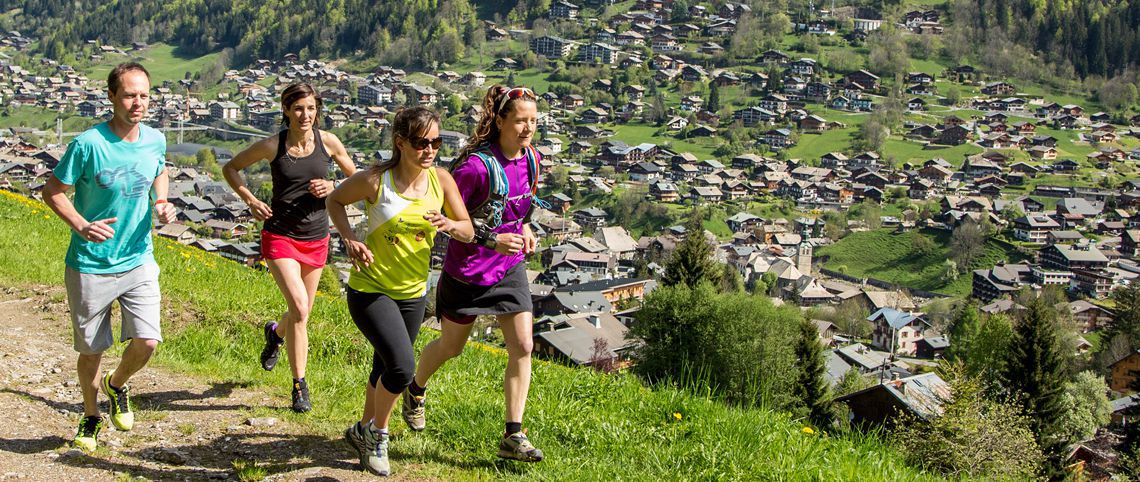01.06
2017
Advice and tips
Developing new skills, improving your stamina, recharging your batteries whilst enjoying yourself and giving meaning to what you do are the fundamentals of trail running.
If you’re keen to hit the mountain paths and trails, the following few lines will have you ready to give trail running a go in a flash, and you won’t want to stop anytime soon!
1. Give yourself time and don’t get too carried away
Whilst you might dream of taking on Mont Blanc like the trail runners in the photos, reaching this level requires several years’ practise. At first, set out for an hour at a time over gentle hills doing weight-bearing exercise and gradually working all muscle groups. Little by little, extend your sessions to include active walking, which will improve your endurance - the basis of trail running. Bear in mind that during a race, participants walk half of the time to manage their physical effort.
2. Don’t forget to prepare your muscles
Trail running comprises significant altitude change and uneven, hilly terrain, making training a lot different from running on the road: your quadriceps, calf muscles and ankles are used a lot more, and it’s the ball of the foot that touches down first, as opposed to the heel. Whether you’re going to take part in short or long trails, hill training using steps and weights, as well as cross training such as cycling, skiing, hiking and orienteering are great ways to prepare your muscles; your body will learn to alternate its efforts, gaining in strength and flexibility, reducing impact on joints and progressing whilst «feeling the pain» - just not too much!
3. Get kitted out
Running at the heart of nature means you have to adapt to a constantly changing environment: uphill and downhill, dry, slippery and rocky ground, not forgetting to take weather conditions into account…
It’s important to choose footwear that is adapted to varied terrain; shoes generally tend to be stiffer with greater support, and are more hard-wearing and slightly heavier than trainers used for running on the road. They also feature deeper lugs for better grip and protection on slippery and muddy surfaces.
You’ll also need a water bottle, cereal bar and windcheater at the very least, to which you can add poles and a hydration pack with a water bottle or water reservoir and stretchy pockets in which to store a survival blanket, food and technical clothing.

4. Respect nature
If you feel the need for peace and quiet, admiring the beauty of nature, this is the place for you. However, don’t forget you are sharing it with mountain bikers, hikers and mountain animals, so please respect the environment, fences and safety instructions. Don’t hesitate to contact the local tourism information boards for more information, or to try out the routes organised by «trail resorts», found in many of the mountain ranges.
5. Listen to your body
And last but not least, our most important top tip. Running in the mountains is demanding, yet exhilarating; coping with the weather, combined with long periods of physical activity (sometimes at high altitudes) in rainy and windy conditions can also help to develop mental strength that is essential for perseverance. But you must remember to rest, listening to your body and mind for signs of weariness and fatigue. To ensure that running is enjoyable, it’s important to be aware of and to respect your physical and mental needs.






